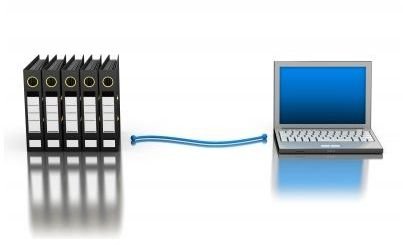How to Evaluate an E-Portfolio: Best Practices for Assessing Job Candidates
Definition
The National Learning Infrastructure Initiative defines an electronic portfolio as
“A collection of authentic and diverse evidence, drawn from a larger archive representing what a person or organization has learned over time on which the person or organization has reflected, and designed for presentation to one or more audiences for a particular rhetorical purpose.”
A good e-portfolio tells the candidates’ story of growth and development over time.
Candidate e-portfolios may include MS-Word, Excel, or PowerPoint documents, images, multimedia, blog entries, hyperlinks to web pages, databases, applications, certificates, etc. It serves as a record of accomplishments, similar to a candidate’s portfolio in the real world. More and more candidates now leverage the power of computing and the Internet to develop e-portfolios. Candidates can update or tweak such portfolios to suit particular requirements with ease, and send to employers with ease.
Employers also find e-portfolios convenient, but evaluating e-portfolios is different from evaluating ordinary physical portfolios, and requires some special considerations.
Evaluation of Content
Employers should evaluate an e-portfolio for content, style, structure, and plagiarism.
The major considerations when evaluating the contents of a candidate’s e-portfolio are:
- The contents fulfilling what it sets out to do. For instance, a software programmer’s portfolio may betray impeccable English and demonstrate skills in literature and English grammar, but may not contain anything substantial to prove competency in programming skills.
- The rationale or explanation to back up posted information. The information per se does not prove anything. Assessment of the candidate’s skills or competency depends on the rationale or argument why such information or artifact needs consideration as evidence for skills, competency, or any other stated purpose. A trained evaluator has to then validate or disprove such assertions.
- Integrity of the content through grammatical and factual correctness.
- The quality of the level and depth of knowledge and information.
- The quantity or breadth of knowledge and information.
- Provision on credits when credits are due.
Evaluation of Style

Style refers to formating, appearance, and other features that spruce up the e-portfolio and make it presentable. The major considerations when assessing an e-portfolio for style are:
- General style features, such as simplicity, too gaudy, or anything else.
- Consistency of formatting and style across all elements of the portfolio.
- Appearance and attractiveness for the user.
- Ease of locating and accessing different features or elements.
- Presence or absence of headers, footers, graphics, and other enhancements.
Evaluation for Set Up and Structure
Ordinary paper-based portfolios are assessed for their content and style of presentation. Evaluations of e-portfolios requires assessing an additional dimension of set up.
The major considerations when evaluating the set up or structure of e-portfolios are:
- Arrangement of files and folders in logical order. Poor portfolios have files arranged haphazardly.
- Security features such as password and access controls.
- User friendliness such as ease of interface menu, or the ease in which a non-familiar user may access the portfolio.
- Platform and version independence. For instance, a good portfolio will have all picture files in the standard.jpeg format, whereas a poorly done portfolio may have different files in different formats, and viewing some files may require downloading or installing specific applications.
- Technical specifications, such as extent to which the portfolio alters host computer’s system files or configuration, and extent of memory consumed.
Plagiarism Check
It is possible to make false representations on a physical paper-based portfolio, and it is much easier to do so with electronic records. Adopt the following approaches to evaluate electronic portfolios for plagiarism and misrepresentations:
- Apply text context to plagiarism checker.
- Check for consistency. An electronic portfolio betrays the candidate’s unique “voice,” which becomes evident to the assessor by navigating the portfolio and reading the reflections on the screen.
- Check candidate’s online presence outside of the e-portfolio. Look for social network activity, outside blogs, and more, to determine whether the style, language, level of skill and awareness, and other traits matches the portfolio.
Never make a major decision such as hiring or promotion based on the e-portfolio alone. The best of checks notwithstanding, candidates may still get away with providing false information or plagiarizing the e-portfolio. Doing the same during live interviews, assessment centers, and other tests would be difficult, if not impossible, and as such, use the e-portfolio to reinforce other tools and arrive at a better hiring decision.
Best Practices
An understanding of how to assess an e-portfolio is incomplete without a list of best practices. Success of the assessment depends on:
- Having clarity on the objectives of the assessment, or why and for what purpose the assessment takes place.
- Developing an assessment system congruent with in-house conceptual framework and consistent with generally accepted standards.
- Creating rubrics that differentiate levels of proficiency for each element in a clear-cut manner.
- Ensuring that the developed rubrics are relevant to the job under assessment.
- Having a policy in place that makes explicit the methodology of assessment, and profile of the assessors, and articulating this policy.
e-Portfolio assessments, like all high-stakes tests, needs to stand the tests of validity, reliability, fairness, and absence of bias.
References
- San Francisco State University. “How to evaluate ePortfolio work.” https://eportfolio.sfsu.edu/fac_assess2.php. Retrieved July 18, 2011.
- Barrett, Helen, C. & Wilkerson, Judy (2004). “Conflicting Paradigms in Electronic Portfolio Approaches. Choosing an Electronic Portfolio Strategy that Matches your Conceptual Framework.” https://electronicportfolios.com/systems/paradigms.html. Retrieved July 18, 2011.
Image Credits:
